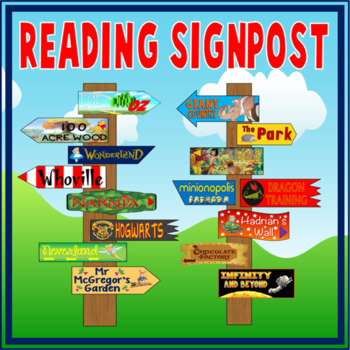
To how he/she has acted, that contrasts with how we (the average reader) would act, or that reveals a
The character acts in a way that is contradictory. The Sign Post strategies ask you to take moments in your reading to stop, think, notice, and note when the following events occur. Instead of answering specific questions about each individual text, Sign Post Analysis asks you, the reader, to ask structured questions about the text in your own way, and to come to your own conclusions! EBSCOhost, /login?url=.The Sign Post reading strategies are a tool we use through ELA and English to help us consider different texts in a similar way. “Meet Your Competition.” Junior Scholastic, vol. How are you introducing big questions and nonfiction signposts strategies to your students in Language Arts or content area classes? In my next post, I’ll share how I adapted an activity from Julie Swinehart to help our students apply their skills to nonfiction texts. After the assessment, students were given one of three articles on youth football and concussions (differentiated by reading level) and a graphic organizer to help them record their big questions and thinking about the signposts they found in their articles. Students could use their notes and copy of the warm-up examples on a quick assessment I gave them to see if they could identify more examples independently and to determine if there were any particular signposts that might need more instruction and practice. On Thursday, we did a quick review together and discussed possible answers for each chunk of informational text in the slideshow below: Students then worked with a partner to go back into our article we had worked with Monday and Tuesday and began our “treasure” hunt for an example of each signpost we then shared our findings with the class. Students received a mini-copy of the notes below to cut and paste into their class notebooks. On Wednesday, we began our work with the nonfiction signpost strategies by reviewing and discussing examples of each signpost. Students also got to share which “big question” was most helpful in pushing their thinking about the text. Toward the last 20 minutes of class on Tuesday, students had opportunities to share their two most important statements and their summary statement of the main idea of the article. Requiring students to use the sentence starters that came from the Probst/Beers text was especially helpful in nudging students to be a little more specific and focused with their thinking about each big question: 
Using Reading Nonfiction Notice & Note Stances, Signposts, and Strategies by Bob Probst and Kylene Beers as my guide, I crafted materials and activities to introduce these concepts and to give students opportunities to practice the strategies with partners and independently with shorter texts.Īfter introducing the Three Big Questions and sentence starters to help students articulate their thinking, my students and I read “Meet Your Competition”, an article about the impact of automation and robots on various career fields ( shout out to GALILEO for providing us access to this wonderful Junior Scholastic article).Īfter our read-aloud and discussion about the article, students could work with a partner or alone to come up with three statements for each big question. I began our unit this week by introducing Probst and Beers’ Three Big Questions and the Signposts Strategies for Nonfiction.


Both units give me an opportunity to integrate a range of reading, writing, and research strategies from Smokey Daniels and Nancy Steineke, Bob Probst and Kylene Beers, Stephanie Harvey, Cris Tovani, Gretchen Bernabei, Kelly Gallagher, Lucy Calkins, and Jane Schaffer. I am so excited that our pacing guide pairs informational text with informational writing and then allows a second round of study in Quarter 3 to build student stamina with informational text and argumentative writing (we’ll be engaging in nonfiction book clubs! come January!). This past week we began our study of informational text and writing for Quarter 2.







 0 kommentar(er)
0 kommentar(er)
